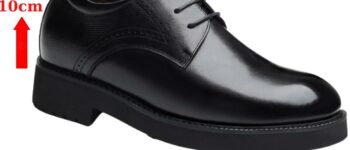The XRF-286 is a wonderful part for use on 1296, and one of the few choices available for developing significant solid-state power on that band. It is an unmatched 26v LDMOS transistor that was once made by Motorola, and can still be found in surplus PCS amplifiers made by Spectrian. A copy of the data sheet can be found on the internet in several places.
- Áo xám phối quần màu gì? Tip phối đồ cực đẹp cho nam giới
- TÌM HIỂU VỀ HÌNH XĂM PHONG THỦY CHO 12 CON GIÁP VÀ LIST NHỮNG HÌNH XĂM CHẤT LỪ “LÊN MỰC” LÀ MÊ MẨN
- Cách đeo túi xách đeo chéo 2 dây đẹp và phong cách cho phái nữ
- Kích thước size Vali thông tin cần biết
- Hội chứng ảo tưởng người khác thích mình (Erotomania)
The Spectrian amplifier output boards contain three of these devices, one 286 driving the other two at 2.4 GHz. There are three of these output boards in those amplifiers, all combined for a total of 40w out. I suppose you could say they were barely used, considering a single 286 is rated at 60w out at 2 GHz.
Bạn đang xem: XRF-286 Amplifiers for 23cm
Xem thêm : Tăng sức hút cho phái mạnh với những kiểu giày Vans nam phối đồ
Unmatched parts like these are the most useful, mainly because the matched ones are set up for different frequency ranges outside of the amateur bands. You can’t really get inside the device package to change the matching network, and trying to re-compensate externally usually results in high losses and inefficiency if it works at all.
On 23cm, an amplifier using just one ‘286’ can be driven into saturation with as little as 3 or 4 watts, and a pair with less than 10, making that last configuration a close match for many of the 10w radios in use today. With 8 to 10 watts drive, a pair of them will easily deliver 150 watts.
Xem thêm : Bật mí 10 cách phối áo sơ mi tay ngắn nam trẻ trung, lịch lãm cho chàng
On the web, one can also find amplifier designs that appear to have been originally developed by F1ANH, F6DRO and others, implemented on FR4. The basic design is very good, though I did make some changes to the bias circuit and the input and output matching transformers. Our French brothers deserve a lot of credit, though, for pioneering the original design.
Although FR4 is inexpensive and easy to work with, it can be problematic; losses create a practical limit to its power-handling capability on 23cm, and it tends to be variable in specs from one lot to the next; thus the decision to port it over to a more reliable material. I tried two low-loss substrates: Rogers 3006 for the prototypes, and Rogers 4003c for the later versions. Both of those materials produced consistent results.
When prototyping this design, I discovered that the input matching line was a bit short for 23cm, probably due to the variability of the FR4 used in the original design. The line needs to be a bit longer, but I left it alone in favor of the small high-Q ceramic trimmer capacitor you can see shunting the input stub. For the microwave purist, I realize this is heresy; however, I like to be pragmatic, and left it that way, appreciating the ability to optimize input match without having to strap in snowflake tuning stubs to do the same. This input stub is 4.32 ohms, and 52 degrees long as shown.  I handled the output stub differently, however, due to the higher RF currents there. It also needed an adjustment to work properly. The first section is 4.07 ohms and 58 degrees long; the second section was the one requiring the change; the original design had this at 22.7 ohms and 52.4 degrees long, but I found that it needed to be lower and longer. 14.2 ohms and 58.4 degrees produced the best results.
I handled the output stub differently, however, due to the higher RF currents there. It also needed an adjustment to work properly. The first section is 4.07 ohms and 58 degrees long; the second section was the one requiring the change; the original design had this at 22.7 ohms and 52.4 degrees long, but I found that it needed to be lower and longer. 14.2 ohms and 58.4 degrees produced the best results.
Nguồn: https://leplateau.edu.vn
Danh mục: Kinh Nghiệm










